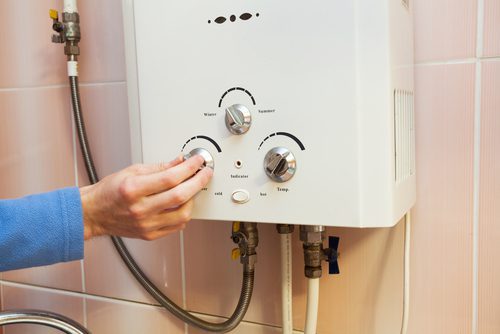What're your thoughts about How to Maintain a Hot Water Heater in a Few Simple Steps?

Warm water is important for day-to-day comfort, whether it's for a refreshing shower or cleaning dishes. To ensure your warm water system runs efficiently and lasts longer, normal upkeep is key. This short article supplies practical tips and insights on exactly how to maintain your home's warm water system to avoid interruptions and costly repair services.
Intro
Keeping your home's hot water system might appear difficult, yet with a few easy steps, you can ensure it runs smoothly for many years ahead. This overview covers everything from understanding your hot water system to DIY upkeep suggestions and understanding when to hire professional help.
Significance of Preserving Your Warm Water System
Routine maintenance not just extends the life expectancy of your warm water system yet additionally ensures it operates efficiently. Ignoring upkeep can bring about decreased performance, greater power bills, and even premature failure of the system.
Indications Your Warm Water System Requirements Upkeep
Recognizing when your warm water system requires attention can prevent significant issues. Keep an eye out for signs such as inconsistent water temperature, strange noises from the heater, or rusty water.
Understanding Your Hot Water System
Before diving into maintenance tasks, it's helpful to understand the basic components of your warm water system. Typically, this includes the water heater itself, pipes, anode poles, and temperature level controls.
Month-to-month Upkeep Tasks
Normal regular monthly checks can assist catch small concerns prior to they intensify.
Purging the Water Heater
Flushing your water heater eliminates debris buildup, improving performance and lengthening its life.
Monitoring and Changing Anode Rods
Anode rods prevent corrosion inside the container. Evaluating and changing them when worn is essential.
Inspecting and Adjusting Temperature Settings
Adjusting the temperature level setups makes certain optimum performance and safety.
Do It Yourself Tips for Upkeep
You can carry out several upkeep jobs yourself to maintain your warm water system in top condition.
Looking for Leaks
Frequently evaluate pipes and connections for leaks, as these can lead to water damages and greater bills.
Examining Pressure Relief Valves
Examining the pressure relief valve guarantees it functions properly and prevents too much pressure build-up.
Protecting Pipelines
Protecting warm water pipes reduces warm loss and can save power.
When to Call an Expert
While DIY upkeep is advantageous, some concerns need professional experience.
Complicated Concerns Needing Professional Assistance
Instances consist of major leakages, electrical issues, or if your water heater is constantly underperforming.
Routine Expert Maintenance Perks
Professional upkeep can consist of extensive inspections, tune-ups, and making sure conformity with security criteria.
Verdict
Normal maintenance of your home's hot water system is crucial for effectiveness, long life, and expense financial savings. By following these ideas and knowing when to seek specialist help, you can guarantee a trusted supply of hot water without unanticipated disturbances.
How to Maintain an Instant Hot Water Heater
Before tinkering with your hot water heater, make sure that it’s not powered on. You also have to turn off the main circuit breaker and shut off the main gas line to prevent accidents. Also turn off the water valves connected to your unit to prevent water from flowing into and out of the appliance. 2. When you’re done, you have to detach the purge valves’ caps. These look like the letter “T” and are situated on either side of the water valves. Doing so will release any pressure that has accumulated inside the valves while at the same time avoid hot water from shooting out and burning your skin. 3. When the purge valves’ caps are removed, you have to connect your hosing lines to the valves. Your unit should have come with three hoses but if it didn’t, you can purchase these things from any hardware or home repair shops. You can also get them from retail stores that sell water heating systems. Read the user’s manual and follow it to complete this task properly. When the hosing lines are connected, open the purge port’s valves. 4. You should never use harsh chemical cleaners or solutions when cleaning your unit. Make use of white vinegar instead. It should be undiluted and you’ll probably use about 2 gallons. 5. Now flush your water heater. This task should probably take about 40 minutes. We can’t give you specific directions for this because the procedure is carried out depending on the type, model and brand of your heater. With that being said, refer to the user’s manual. 6. When you’re done draining the unit, you have to turn off the purge port valves again. Remove the hosing lines that you earlier installed on each of the water valves. Put the valve caps (purge port) back in their respective places and be very careful so as not to damage the rubber discs that are found inside these caps. 7. Now that everything’s back in place, check your user’s manual again to find out how to reactivate your water heating system. 8. Once it is working, turn one of your hot water faucets on just to let air pass through the heater’s water supply pipes. Leave the tap on until water flows smoothly out of it. https://www.orrplumbing.com/blog/2014/september/how-to-maintain-an-instant-hot-water-heater/

I'm very enthusiastic about Tips For Maintaining Your Hot Water Heater and I'm hoping you liked my blog posting. Do you know about somebody else who is interested in the topic? Why not share it. Thank-you for taking the time to read it.
Detail